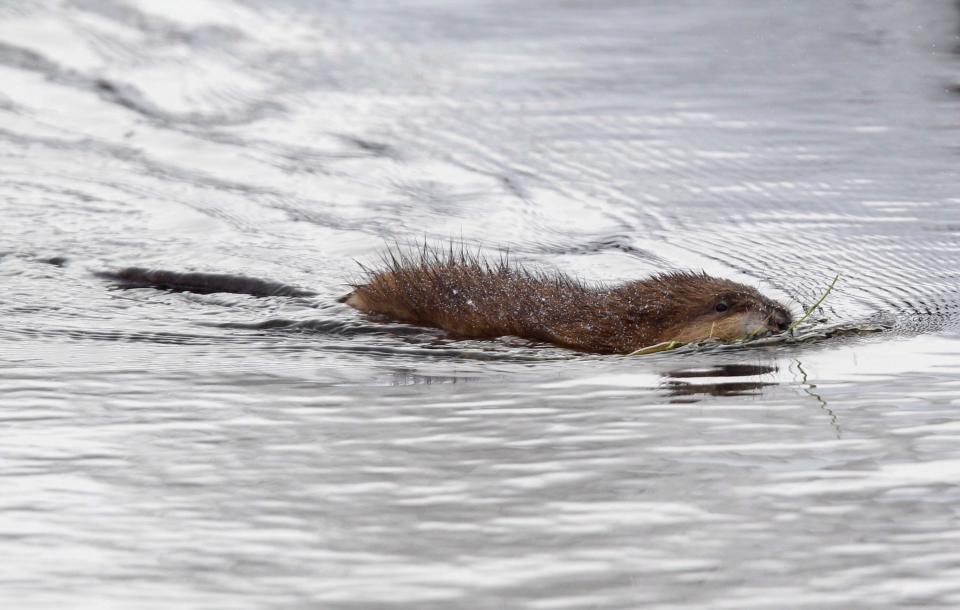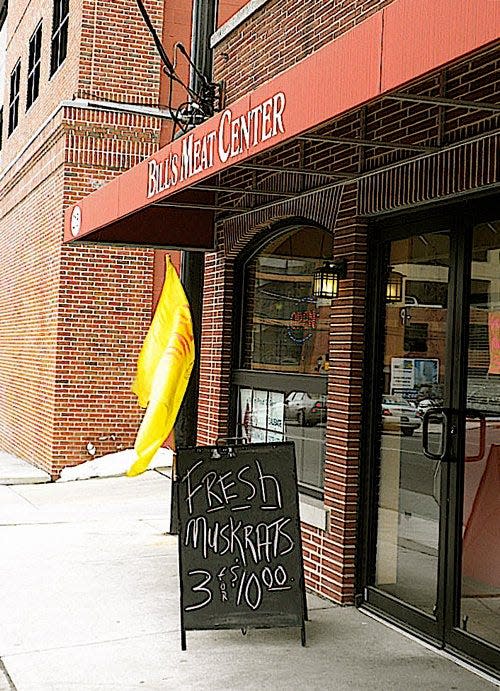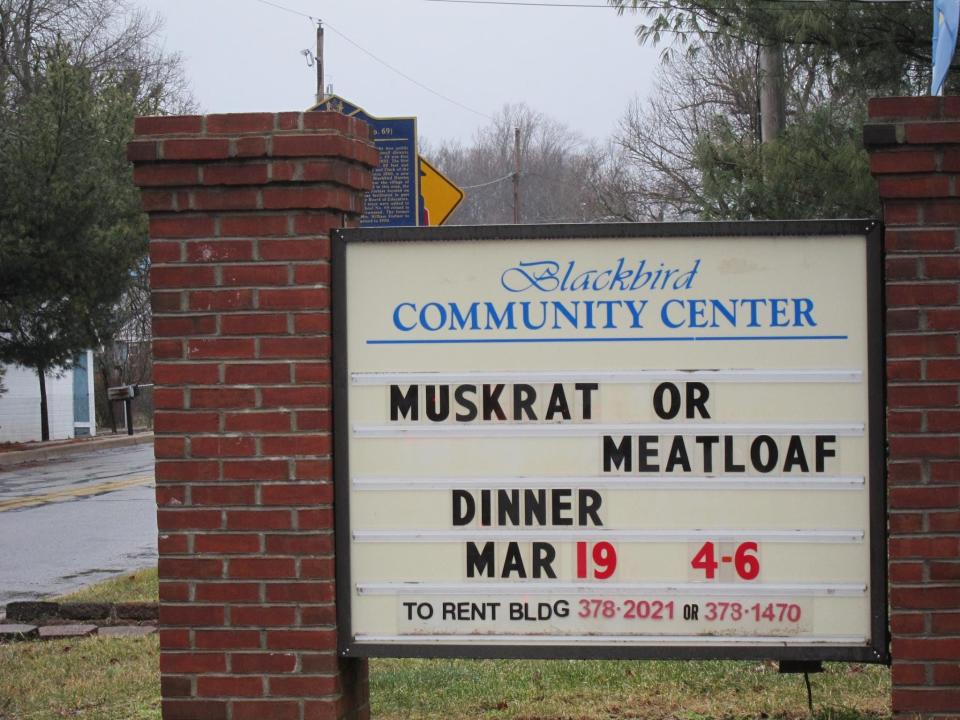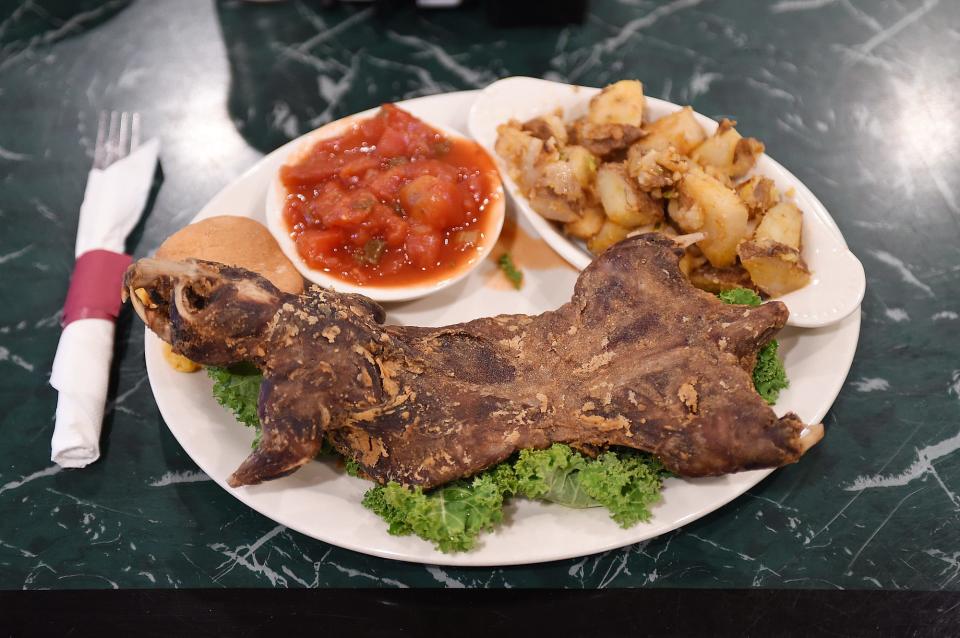Remember when restaurants served muskrat? It's hard to find this, uh, Delaware delicacy
Hurry or you'll miss it.
The season for trapping muskrats in New Castle County ends on Sunday, March 10; it's over in Kent and Sussex counties on Friday, March 15.
But, the eating of the muskrat or 'rat, also known as marsh rabbit, at Delaware restaurants seems nearly extinct.
These days, muskrat, an heirloom meat if there ever was one, tends to be more of a culinary curiosity or gastronomic dare, that tends to entice hunters or those hungry for a taste of the past.
Still, like it or not, it's part of Delaware's history.
Muskrat has fed generations, but a move in 1974 to make the muskrat Delaware's official state mammal was unsuccessful. (That distinction goes to the grey fox).
The muskrat's inclusion in Delaware's past has been preserved. A March 1932 photograph of two muskrat trappers showing off their catch from Delaware's Woodland area in Sussex County was just published on March 4 on the social media sites of the Delaware Public Archives, compiled by former News Journal reporter robin brown.

The Kent County chapter of Ducks Unlimited has served muskrat at its annual dinner, a tradition started in the mid-1970s.
For years during the December through March muskrat season, the owner of the former Bill's Meat Center on King Street in downtown Wilmington would fly a yellow flag and set out a sign that read: "Fresh muskrats 3 for $10."
In 2011, John Assini Jr., whose father John Sr., owned the Wilmington shop, a city staple since 1958, told Delaware Online/The News Journal that even though eating habits and diets had changed, there was still a certain group of people who wanted their 'rat.

"It always sells out. If I could stock my store with it all year, I'd be a millionaire," he said of the muskrats that were sold skinned, gutted and fileted, but with the head on. "That's so you can identify it," Assini said.
He said visitors to Wilmington (and some on their way to the nearby train station) like to jump out of cars or taxis and stand next to the muskrat sign to take photos.
"They can't believe what they're seeing. They didn't even know people ate muskrat," Assini said.
Unfortunately, for those who want to cook muskrats at home, the business is no longer operating.
Funky-tasting muskrat meat is certainly not a universally loved delicacy. It is either delightful or dreadful, depending on your level of squeamishness.
I've tried muskrat — twice (in the interest of culinary journalistic pursuits) — at the old Wagon Wheel in Smyrna, and, well, let's just say, I would have gladly offered my share to anyone who wanted it.
The eatery served muskrat dinners for more than 40 years. Plates came with fried potatoes, stewed tomatoes, and a hefty hunk of homemade cornbread. The $15 meal included dessert, a choice of rice pudding, bread pudding, or ice cream.
Muskrat is "an acquired taste, like oysters. Look, it's not chicken. If you want chicken, eat chicken," a Wagon Wheel customer told me during a visit in 2009. "This is muskrat. It doesn't taste like nothing else but muskrat."
But even then, customers knew the craving for muskrats was dwindling.
"This is not a young kid's delight," a Wagon Wheel patron said in 2009.
Food Network star Robert Irvine, who revamped the Wagon Wheel in 2013 for an episode of "Restaurant: Impossible," attempted to kill the annual muskrat dinners at the Smyrna restaurant, but the 'rat came back the following year. The Wagon Wheel only stopped serving the dinners when it closed in 2014.
Some call muskrat a taste of Delaware, but I'd rather have a Casapulla's Italian sub or a slice of Grotto pizza. I think the dark, earthy meat served at the Wagon Wheel had a brackish, fishy flavor that lingered like an unwanted house guest. The funky taste was hard to get rid of both in the nose and on the tongue no matter how many glasses of water or pieces of bread you ate.
Seasonal muskrat dinners are becoming relics from bygone days. Blackbird Community Center in Townsend used to hold muskrat (and meatloaf) dinners. When I called to find out if it still had one, a spokeswoman said the center hadn't held one in about two years. Winters have been warm and not conducive to trapping muskrats, she said. But the dinners could return.

Milford Moose Lodge 2316 had an annual wild game and seafood dinner that included muskrat, deer, duck, geese, beaver and raccoon, along with oysters on the half shell, fritters, frog legs, steamed shrimp, fish, clam chowder, crab soup, and beer.
Now, the lodge, at least on its Facebook page, touts dinners featuring spaghetti, baked chicken, tacos, oysters Rockefeller, and shepherd's pie, but not muskrat.
For years, the Sunset Restaurant, BBQ & Crabs in New Castle, which opened in 2004, had trappers bring in fresh muskrat and fresh raccoons. It ceased operations about five years ago.

Your best bet for muskrat today at a Delaware restaurant is the Southern Grille in Ellendale. Its $17.95 muskrat dinner, served daily during the season, comes with meat that is broiled and flash-fried. It can be served plain or smothered in gravy or barbecue sauce. And you get two sides. Last month, the restaurant made a muskrat pie, similar to shepherd's pie, that sold for $19.95. It had plenty of takers.
So how do others feel about the taste and look of cooked muskrats?
According to a February article in The Washingtonian by Ike Allen about a visit to the Southern Grille, it wasn't exactly muskrat love.
"When the plate arrives, it looks like a giant rat or gerbil has died while resting on a kale leaf, and then has been smothered in barbecue sauce or gravy. On the side: two small bowls of collard greens, mashed potatoes, or pickled beets," Allen wrote. "If you’ve ever been to a Peruvian restaurant that serves cuy (guinea pig), the platter will look somewhat familiar."
The taste seemed better than the appearance. "Southern Grille’s fried muskrat is slightly dry and stringy, but it tastes like lean, well-seasoned beef, not like your idea of a marsh-dwelling rodent," Allen wrote.
To each his own. And to some customers, muskrat is a yum, not a yuck.
Old Delaware places: Do you remember Kahunaville, the 'biggest, baddest nightclub in the Mid-Atlantic region'?
"The muskrat was amazing last night," wrote one fan on the Southern Grille's Facebook page. "We’ll be back."
There you go. The Southern Grille told Delaware Online/The News Journal on Monday that muskrat will be available through March, or until supplies last.
Get it while you can. Seasons eatings.
"Do you remember?" is an occasional News Journal/Delaware Online feature that looks at the history behind long-gone Delaware buildings, objects, businesses, and places.
If you want to read more stories from Patricia Talorico, click here. You can find her on Instagram, X (formerly Twitter) and Facebook. Email ptalorico@delawareonline.com or leave a message at 302-324-2861. Sign up for her Delaware Eats newsletter.
This article originally appeared on Delaware News Journal: Not just a dare meat, muskrat was once a Delaware eating tradition

